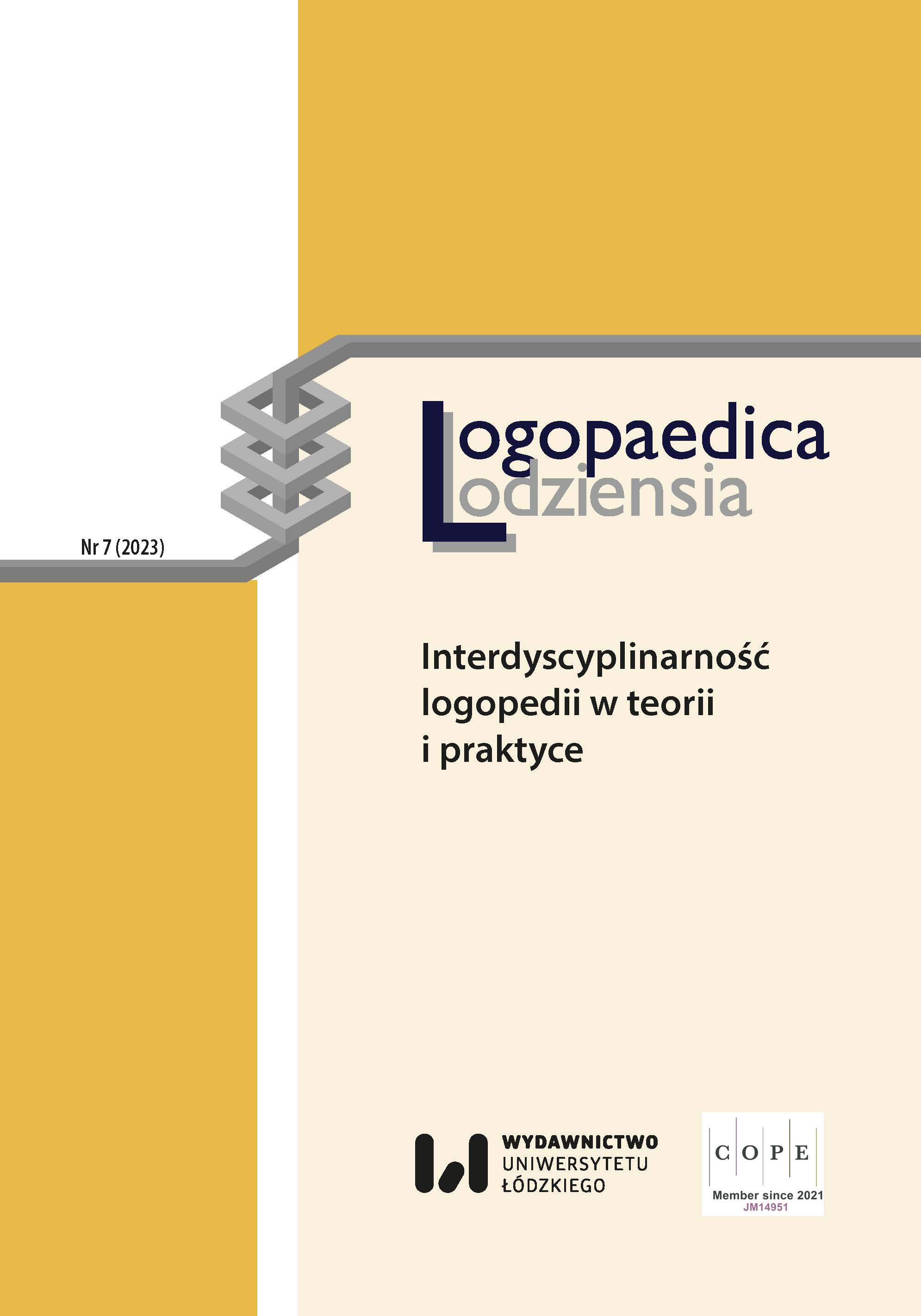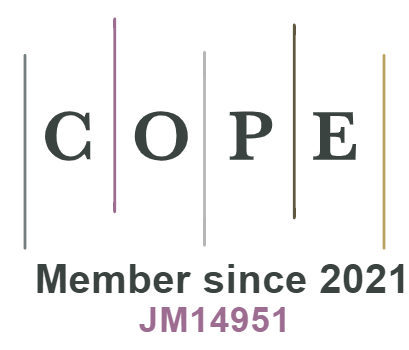Sposoby przedstawiania deficytów mowy w przestrzeni filmowej – na wybranych przykładach
DOI:
https://doi.org/10.18778/2544-7238.07.03Słowa kluczowe:
niepłynność mowy, mowa osób z niedosłuchem, komunikacja przy mózgowym porażeniu dziecięcym, zaburzenia mowy, film fabularnyAbstrakt
W artykule poruszono ważny społecznie temat dotyczący zaburzeń mowy, także u osób z niepełnosprawnością, oraz metod ich prezentacji w przestrzeni filmowej. Podstawowym celem artykułu jest sposób przedstawienia dysfunkcji w zakresie komunikacji w dziele filmowym. Artykuł próbuje odpowiedzieć na pytania: „czy otoczenie wpływa na rozwój umiejętności komunikacyjnych osób z dysfunkcjami?”, „w jaki sposób dzieło filmowe pokazuje relacje osób z zaburzeniami mowy oraz z niepełnosprawnością w kontaktach z najbliższymi?” oraz „na ile obraz filmowy jest zgodny z opisem naukowym danego zaburzenia?”. Zawarte w artykule rozdziały analityczne poświęcone zostały trzem zaburzeniom oraz wybranym filmom fabularnym, w których aktorzy prezentują umiejętności językowe i komunikacyjne postaci filmowych zmagających się z niepłynnością mówienia, dysfunkcją słuchu oraz mózgowym porażeniem dziecięcym.
Pobrania
Bibliografia
Chce się żyć, 2013, directed by M. Pieprzyca.
Google Scholar
The King’s Speech, 2010, directed by T. Hooper.
Google Scholar
Mój Nikifor, 2004, directed by K. Krauze.
Google Scholar
Bielak A., 2012, Wędrówka wspomnień. Rozmowa z Benhem Zeitlinem, “Dwutygodnik”, No. 94 https://www.dwutygodnik.com/artykul/4007‑wedrowka‑wspomnien.html (accessed: 15.06.2022).
Google Scholar
Dictionary.com (n.d.), logophobia, https://www.dictionary.com/browse/logophobia (accessed: 15.06.2022).
Google Scholar
Ejsmunt‑Wieczorek I., 2022, Zachowania językowe i komunikacyjne osób ze spektrum autyzmu w wybranych filmach fabularnych, “Logopedica Lodziensia”, No. 6, pp. 37–49.
Google Scholar
Grabias S., 1994, Język w zachowaniach społecznych, Lublin: Wydawnictwo Uniwersytetu Marii Curie‑Skłodowskiej.
Google Scholar
Grabias S., 2012, Logopedia: teoria zaburzeń mowy, Lublin: Wydawnictwo Uniwersytetu Marii Curie‑Skłodowskiej.
Google Scholar
Kaczmarek L., 1988, Nasze dziecko uczy się mowy, Lublin: Wydawnictwo Uniwersytetu Marii Curie‑Skłodowskiej.
Google Scholar
Kita M., 2022, Opisać Verbum w dziele filmowym. Refleksje nad książką Bogusława Skowronka Język w filmie. Ujęcie mediolingwistyczne, “Forum Lingwistyczne”, No. 9, pp. 1–7.
Google Scholar
Krakowiak K., 2006, Studia i szkice o wychowaniu dzieci z uszkodzeniami słuchu, Lublin: Katolicki Uniwersytet Lubelski.
Google Scholar
Łosiowski Z., 1997, Dziecko niepełnosprawne ruchowo (cz. 1): wybrane zagadnienia neurorozwojowe i zespoły neurologiczne, Warszawa: Wydawnictwa Szkolne i Pedagogiczne.
Google Scholar
Mazanek E, 2003, Mózgowe porażenie dziecięce: problemy psychologiczno‑pedagogiczne, Warszawa: Akademia Pedagogiki Specjalnej im. Marii Grzegorzewskiej.
Google Scholar
Michałowicz R., 2001, Mózgowe porażenie dziecięce, Warszawa: Wydawnictwo Lekarskie PZWL.
Google Scholar
Milewski T., 1975, Językoznawstwo, Warszawa: Państwowe Wydawnictwo Naukowe.
Google Scholar
Muzyka‑Furtak E., 2011, Konstrukcje słowotwórcze a kategorie poznawcze dzieci niesłyszących, “Acta Universitatis Wratislaviensis”, Vol. 22, pp. 117–132.
Google Scholar
Płusajska‑Otto A., Myszka A., 2022, Rola filmów w kształtowaniu właściwych postaw wobec jąkania się. Refleksje z polskich projekcji filmu When I stutter, “Forum Lingwistyczne”, No. 10, pp. 1–28.
Google Scholar
Porayski‑Pomsta J., 2015, O rozwoju mowy. Dwa studia, Warszawa: Dom Wydawniczy Elipsa.
Google Scholar
Pruszewicz A., 1992, Foniatria kliniczna, Warszawa: Państwowy Zakład Wydawnictw Lekarskich.
Google Scholar
Szamburski K., 2011, Diagnoza niepłynności mówienia, [in:] E. Czaplewska, S. Milewski (eds.), Diagnoza logopedyczna, Sopot: Gdańskie Wydawnictwo Psychologiczne, pp. 367–414.
Google Scholar
Woźniak T., 2015, Diagnoza i terapia osób z zaawansowanym jąkaniem, [in:] S. Grabias, J. Panasiuk, T. Woźniak (eds.), Logopedia. Standardy postępowania logopedycznego, Lublin: Wydawnictwo Uniwersytetu Marii Curie‑Skłodowskiej, pp. 798–835.
Google Scholar
Pobrania
Opublikowane
Wersje
- 2023-12-01 - (2)
- 2023-11-29 - (1)
Jak cytować
Numer
Dział
Licencja

Utwór dostępny jest na licencji Creative Commons Uznanie autorstwa – Użycie niekomercyjne – Bez utworów zależnych 4.0 Międzynarodowe.












